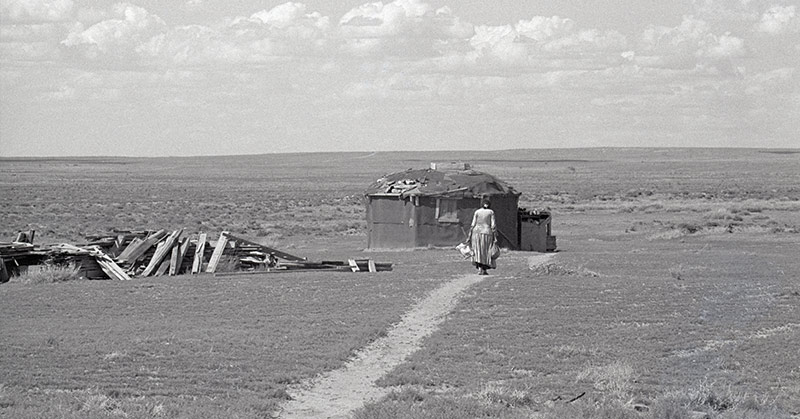In 1977, the United Nations Conventions in Geneva was paid a visit by Marie Sanchez, a chief tribal judge on the Northern Cheyenne Reservation. She stood up to speak about Indigenous Rights, particularly about the rights of American Indian women who were forced to be sterilized. Sanchez declared this “the modern form of genocide.”
Mass Sterilization
This began six years prior when physicians sterilized about 25% of Native American women capable of childbearing, in accordance with the Family Planning Services and Population Research Act of 1970. Some evidence shows that more than 25% of the women were affected by this law.
The cruelest part is that some of these procedures were carried out without the women’s knowledge or consent, sometimes under pressure or duress. This law also supported sterilizations for people under the Indian Health Service and Medicaid patients. Black and Latina women were also targets of forced sterilization.
A study by the U.S. General Accounting Office found that four out of the 12 Indian Health Service regions sterilized 3,406 American Indian women without their consent between the years 1973 and 1976. Thirty-six of these victims were under the age of 21, although the moratorium on sterilizations on women younger than that age. This study was limited, which means the actual number of women affected is most likely to be much higher.
Dr. Connie Pinkerton-Uri, Choctaw/Cherokee did a study two years early in 1974 and found that at least one in four American Indian women were sterilized. Dr. Pinkerton-Uri stated that the Indian Health Service had “singled out full-blooded Indian women for sterilization procedures.” [1]
Some experts estimate the percentage of women sterilized in this group were closer to 50%.
A History of Injustice
As Sanchez and Native women fight against this injustice, they also recognize its importance as one of many injustices that plagued Natives from the beginning of U.S. colonialism to the ones that prevail today.
In the 19th century, the American federal government forced natives into reservations, creating numerous disasters for public health. The American Indian population reached its all-time lowest numbers by the 1900s. Children were especially vulnerable to diseases and fatality, and in 1916, a government official attested that about three-fifths of Native children passed away before the age of five.
The medical personnel believed that they were actually aiding these families to become more financially secure with fewer children to support. Meanwhile, it was detrimental to these women as marriages fell apart, and they suffered from higher rates of psychological problems. [2]
The women took it upon themselves to birth more children, although their own health was not great. Historian Frederick Hoxie praised these actions, stating that high birth rates saved these people from extinction.
Disease was not the only hardship waiting for them on these reserves. The government wanted to “Americanize” these people, rather than killing them outright as had been the policy into the 1870s. Instead, their goal was to euthanize Native culture, including their language, clothes, and spiritual practices. The government criminalized Native healers and their treatments and dismissed midwives and their knowledge. They limited ceremonies or pressured them to cease or forced them into hiding.
Treaties and agreements made before and after 1871 put the federal government in charge of the Native’s health care. As the health in the reservations declined and became increasingly difficult to dismiss, the Office of Indian Affairs created hospitals where women were encouraged to go for childbirth. By the 1950s, the Indian Health Service was created and the majority of women birthed in hospitals.
However, this nicety didn’t last. That same year as the service began, the government closed some of the hospitals and politicians pulled funding from services that only Natives benefited from, creating the threat of more hospitals closing.
This forces women to drive up to two hours to deliver a baby. Additionally, many of these reservation hospitals are still underfunded.
Overall, officials wanted to remove the government’s responsibility for the Natives.
Some of the sterilization that Sanchez came to protest occurred in some of these remaining hospitals and others happened in off-reservation hospitals that provided services for Natives.
Read: Expert Warns Trophy Hunting Could Push Polar Bears To Extinction
“Those Who Do Not Learn History…”
The speech at the United Nations was just the beginning for Sanchez. By the following year, she had founded the Women of All Red Nations (WARN), an organization run entirely by Native women. Sanchez also joined the National Women’s Health Network’s advisory board. By the 80s, this advocacy brought on some federal regulations that help protect women from forced sterilization. For example, one of the new regulations involves a waiting period of three to 30 days between consent and the procedure.
This also brought the issue of abortion for Native women. Abortion was mainly disallowed until the late 70s, and since Native women were under federal health services, this procedure became almost impossible to obtain.
This past is a painful but important one to remember since it continues to affect the health of Native women and their children. This past is why Native American women continue to advocate for the wellbeing of their communities, insisting that the Indian Health Service should be responsible for giving quality health care to their members, and calling for better resources.
Knowing what has happened in history can help pave the way to a brighter future for Native women and their communities.
Keep Reading: Indigenous Canadians in Water Crisis as Nestlé Drains a Million Gallons a Day From Their Land
- NLM. 1976: Government admits unauthorized sterilization of Indian Women. National Institutes of Health, Health & Human Services https://www.nlm.nih.gov/nativevoices/timeline/543.html
- Ellen J. Kennedy. On Indigenous Peoples Day, recalling forced sterilizations of Native American women. MINN Post https://www.minnpost.com/community-voices/2019/10/on-indigenous-peoples-day-recalling-forced-sterilizations-of-native-american-women/ October 14, 2019
- Brianna Theobald. A 1970 Law Led to the Mass Sterilization of Native American Women. That History Still Matters. Time. https://time.com/5737080/native-american-sterilization-history/ November 28, 2019

